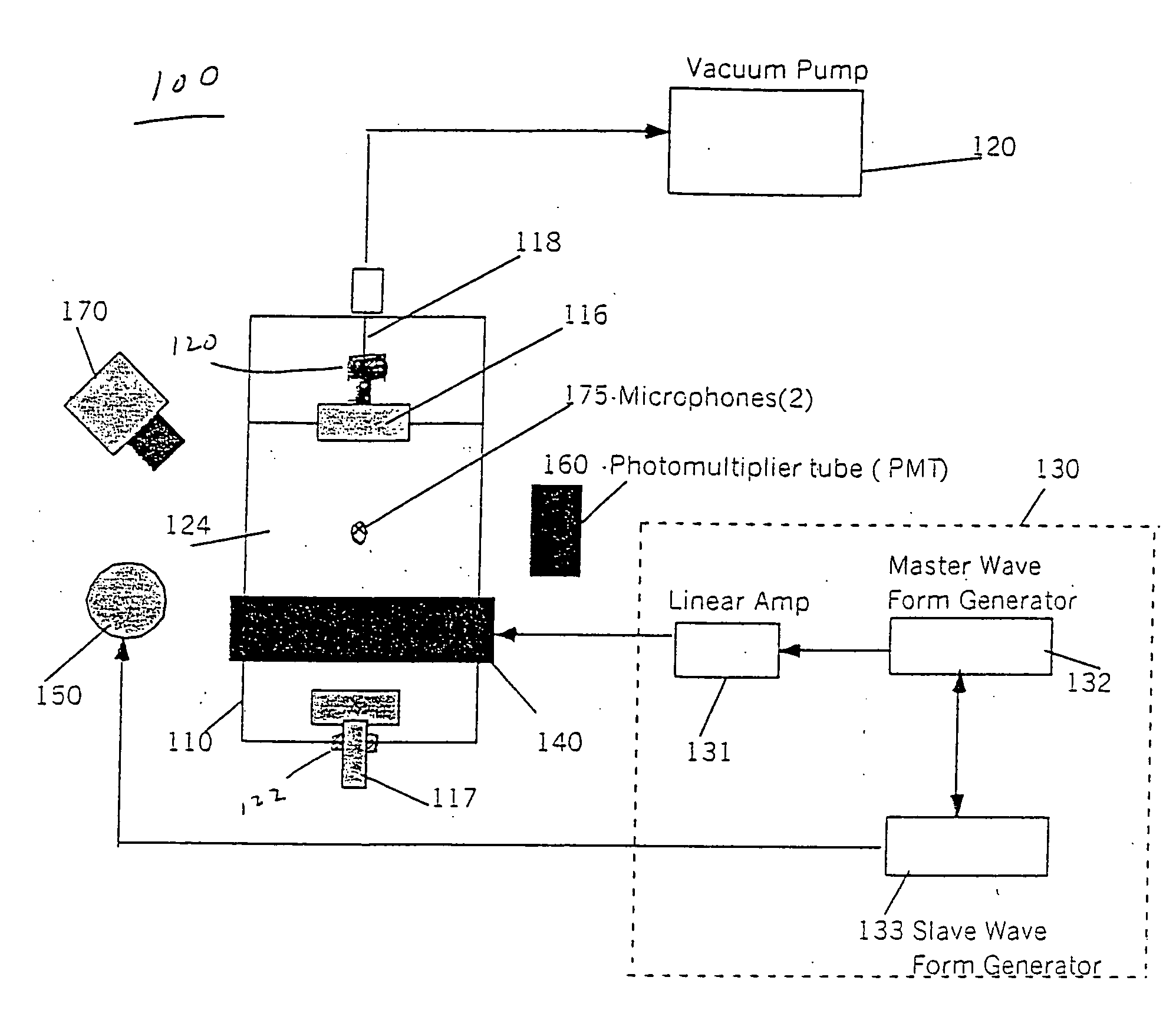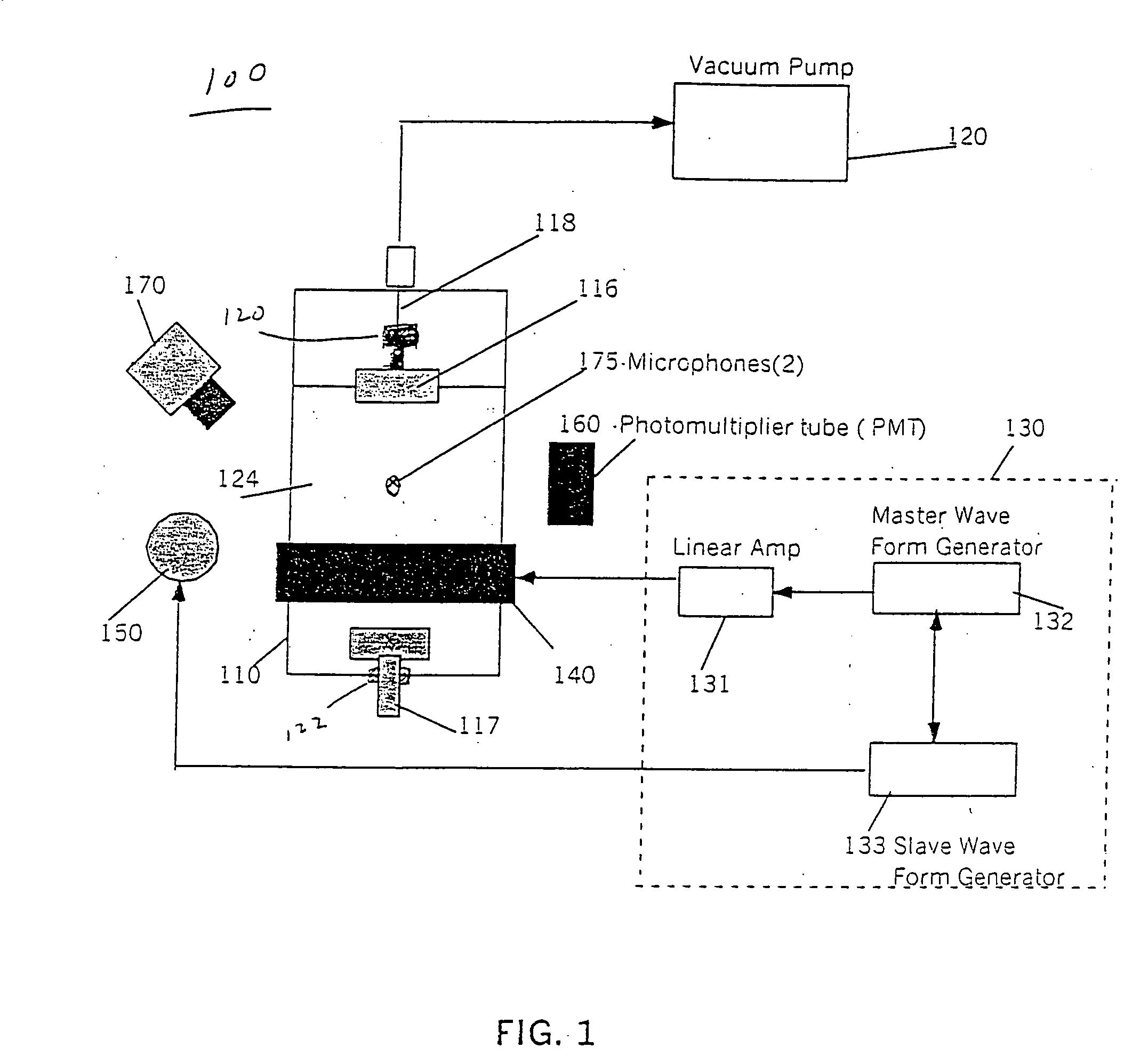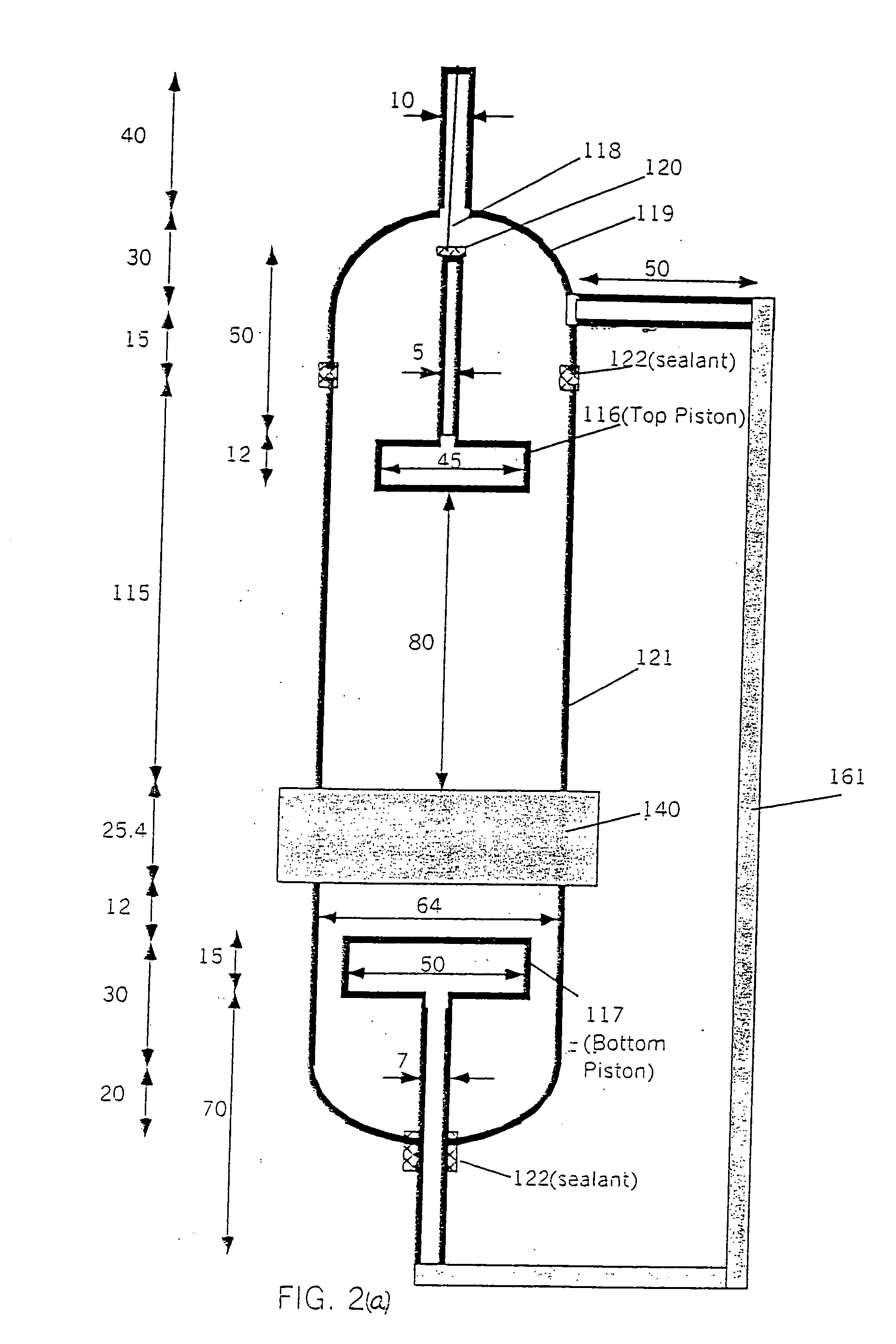Methods and apparatus to induce D-D and D-T reactions
a technology of d-t and d-t, which is applied in the field of cavitation, can solve the problem that liquids cannot be tensioned beyond a certain limi
- Summary
- Abstract
- Description
- Claims
- Application Information
AI Technical Summary
Benefits of technology
Problems solved by technology
Method used
Image
Examples
example 1
Experimental Setup
[0189] Acetone was used as the working liquid in experiments performed.
[0190] Non-deuterated acetone (C3H6O) was used as the control fluid and deuterated acetone (C3D6O) was used as the test fluid. Acetone was chosen because organic fluids, such as acetone, permit the attainment of large tensile states without premature cavitation. This allows high levels of liquid superheat to be built up prior to nucleation which leads to correspondingly higher implosion temperatures. Organic liquids are generally also desirable as working liquids because they generally have relatively large phase-change coefficients, which further enhances the attainable implosion temperature.
[0191] To minimize the effect of gas cushioning to promote rapid condensation during implosive collapse, highly degassed organic liquids were used. To degass the working liquid, the working liquid was subjected to an acoustic pressure field that oscillated in resonance with the liquid sample and its cont...
example 2
System Dynamics
[0203] An important parameter concerns the timing and occurrence of the 14 MeV neutron pulse produced by the fusion reaction relative to the cavitation initiation source pulse. With a system configured using a PNG cavitation initiation source and the electronic timing systems described above (FIG. 1), it was found by analyzing the time spectrum of PNG emitted neutrons that neutrons were emitted over a time span of about 12 s (4 to 6 μs at full width at half maximum (FWHM)). Neutron counts were reduced considerably after about 15 to 20 μs following the PNG firing. The PNG bursts were timed to be initiated when the working liquid tension state was greatest, such as at 270° after the positive zero crossing of the sound pressure field in the center of the test chamber.
[0204] For multiple-bubble implosions, several bubbles can implode and emit closely spaced SL flashes during any given cycle.
[0205] The time between a SL flash and the shock wave signals received at two m...
example 3
Tensioning N-Acetone (C3H6O) and D-Acetone (C3D6O)
[0209] Experiments were conducted with C3H6O (100% nominally pure) and C3D6O (certified 99.92 atom % D-acetone) obtained from W.M. Barr & Co., Memphis, Term. The working liquids were filtered before use through 1 μm filters. Degassing was performed by applying a pressure of about 10 kPa and acoustically cavitating the liquid for about 2 hours.
[0210] To ensure continued robust nucleation growth and implosive collapse, the drive voltage to the PZT was set to be about double that needed for occasional cavitation, which is defined herein as the occurrence of nucleation and collapse within a 10-s observation period. The negative pressure threshold for bubble nucleation by neutrons and alpha particles in acetone is known to be approximately −7 to −8 bar.
[0211] A pressure map of the test chamber was obtained using a calibrated hydrophone. Using the scale factor for induced pressures in the test chamber versus drive voltage to the PZTs, a...
PUM
 Login to View More
Login to View More Abstract
Description
Claims
Application Information
 Login to View More
Login to View More - R&D
- Intellectual Property
- Life Sciences
- Materials
- Tech Scout
- Unparalleled Data Quality
- Higher Quality Content
- 60% Fewer Hallucinations
Browse by: Latest US Patents, China's latest patents, Technical Efficacy Thesaurus, Application Domain, Technology Topic, Popular Technical Reports.
© 2025 PatSnap. All rights reserved.Legal|Privacy policy|Modern Slavery Act Transparency Statement|Sitemap|About US| Contact US: help@patsnap.com



